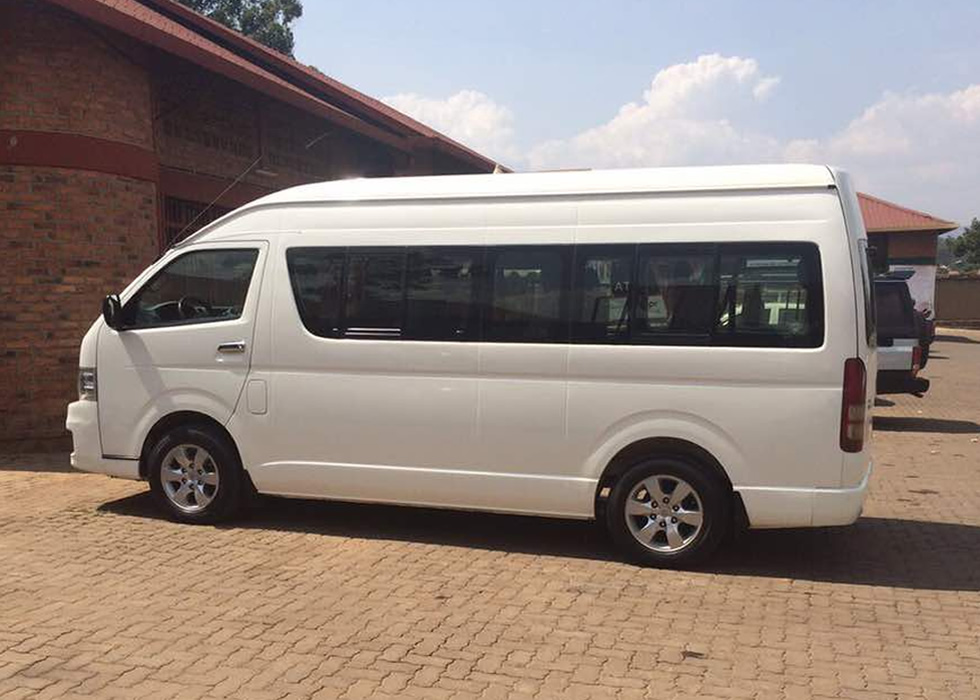
Best Van Rentals in Rwanda
Are you planning to rent a car in Rwanda and you do not which one is the best? Have you ever used a van or you are looking for one to hire for your safari in Rwanda? Well, our fleet of vans come in different sizes and they range from the usual vans to minivans as well as full size for you to hire and can be hired for vacation in any part of Rwanda. We offer van hire services for visitors on Rwanda safari and depending on your travel interests in this magical and mysterious country, our van rentals are luxurious and offer you that total comfort and luxurious room for you to stretch legs and also adequate space for your cargo. Our van fleet include;
Passenger Vans
For those of you who are interested in passenger vans and you are within Kampala, our passenger vans are the best for you to rent for your vacation. We are available 24/7 to help you navigate to that dream destination at a right time and you can hire one at a relatively cheaper price.
15 passenger vans
Depending on what your travel interests are and number of people you intend to move with, we have many 15 passenger vans and all of them are very ideal for large family trips or if you are planning to travel as youths, sports teams and others. Our vans are pocket friendly and we offer the best for you to live within your dreams.
Cargo van hire
In case you have heavy luggage and looking for the best solution then the best you can do is simply find our cargo vans. Our cargo van rentals are reliable, simple, pocket friendly and relieve you from any stress. They come with adequate space for you to transport your goods and very easy for you load and off load. What stresses people more is landing into a destination and they become stranded with cargo but with our excellent cargo van rentals, we have you covered up.
Omnibus vehicles
If you are searching for the best omnibus car for your safari in Rwanda or if you are planning to travel with your family our omnibus car rentals are the best for you realize your dreams in Rwanda. We provide many kinds of omnibus vehicles for you to rent and they are ideal for wildlife viewing experiences in the savanna grassland protected areas.
Read More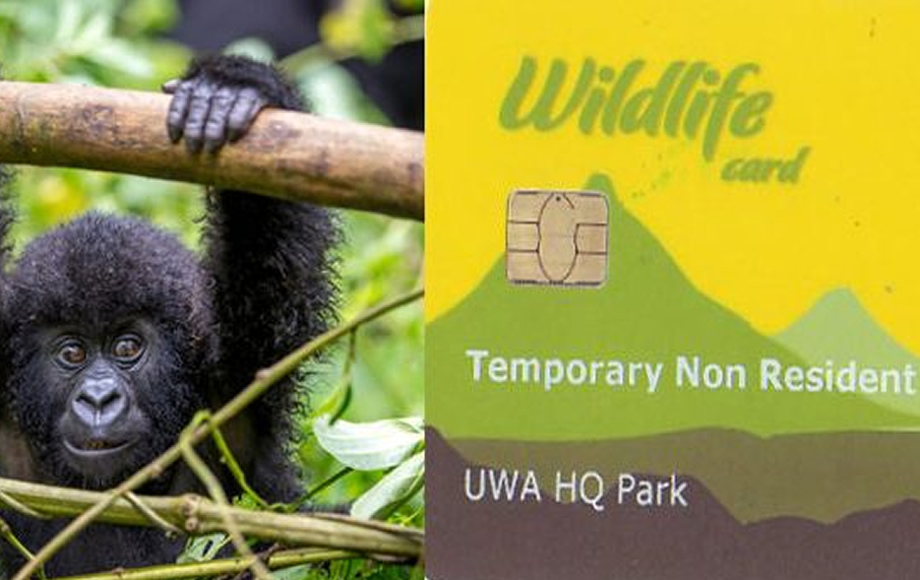
Why Are Gorilla Permits Expensive?
Have you ever wondered why the price of gorilla trekking is far more expensive than any other wildlife activity? Well, this article brings you some of the reasons why this activity is expensive. Firstly, gorilla trekking is an extraordinary activity conducted within only four National Parks in three lucky African countries. These include Mgahinga and Bwindi Park within Uganda, Virunga National Park of the Democratic Republic of Congo (DRC) and Volcanoes National Park in Rwanda. Presently, gorilla permits cost US$1500 in Rwanda, US$700 for those going on Uganda safaris and US$400 per person for those looking to gorilla tracking in the Democratic Republic of Congo.
Below are therefore the genuine reasons why gorilla trekking permits are more expensive than permits for other tourist activities across these three countries;
For safety and monitoring
These Giant Apes are always monitored day and night to ensure safety in their natural habitats. Therefore, there is a great need to employ and pay Gorilla doctors, tourism police and security guards, and Forest Rangers among others. Monitoring ensures that they are not hunted or poached, trapped (using wire snares), trafficked or infected by human diseases like Tuberculosis, Ebola, Cold and flu, and cough which can end up killing them. This is probably one of the reasons why the number of tourists visiting them per day is monitored and even gorilla trekking is conducted under strict guidelines. Therefore making gorilla permits expensive allows all the people involved in their monitoring and security to get paid.
To reduce familiarization between human beings and mountain gorillas
Mountain gorillas are wild animals supposed to remain in their authentic wild nature even when they are habituated to be used to presence of human beings. Over familiarization with them ruins their natural state hence the reason prices of gorilla permits are always high, to limit the number of people who can afford to visit them. Imagine if permits costed just $30, every Tom Dick and Harry would be able to afford the adventure hence these Giant Apes would be over visited, which in the end will reduce their wild nature.
For gorilla conservation
Setting high prices for gorilla permits is important for regulating the number of tourists who visit these critically endangered mountain gorillas in the Four National Parks. With the high rates of permits, few people will be able to afford them hence reduce on crowds that throng the Natural habitats of these animals. Activities like game drives charge relatively low amounts and are always thronged which is not what is desired for the Giant Apes.
To ensure local community development
It should be noted that part of the proceeds from gorilla trekking are used in local community development through projects or providing of services. Several projects such as water and sanitation, health and education centers and roads for communities around National Parks have been made possible with revenues from gorilla trekking.
Mountain gorillas are rare/exceptional and critically endangered
As earlier mentioned, these primates are found in only four national parks of three countries (Uganda, Rwanda and the Democratic Republic of Congo) in the entire World. Because they have no replacement/substitute, wildlife enthusiasts will always book for gorilla trekking safaris at whatever cost. Due to the high demand of gorilla permits by tourists, it is very important for book for the activity at least 6 months in advance to avoid disappointments.
In conclusion, Gorilla permits are generally expensive to ensure local community development, mountain gorillas are rare and critically endangered, to ensure gorilla conservation through setting high rates to regulate number of people to visit critically endangered mountain gorillas, for safety and monitoring of the Giant Apes and to avoid familiarization between humans/tourists and these wild animals.
Read MoreLong Term Car Rental in Kigali
For over years that we have been in the car hire business and having conducted in-depth studies on car hire in Rwanda, we currently provide monthly and annual car hire. Long-term car rentals come with some benefits and if you are an expat or a travel with a longer stay in Rwanda, this is the right service for you.
What are some of the advantages and how much can one save by hiring a car for a longer period in Rwanda?
The long-term car rentals are the same like traditional car hire. However, they are distinct depending on the time duration of renting it. The ordinary/traditional rental cars in Rwanda are often used for short tours, weekend gateways or particular occasions which is different when you hire for a month or a year. Long-term car rental service is best suited for holidaymakers who plan to spend a long period of time and they are in need for a car each day or each time they want to conduct their daily activities.
How long-term car hire works in Rwanda?
Long-term car rental like short-term car hire offers a related service but the difference arises considering the longer duration. In case you hired a car in Rwanda with us prior your actual date of tour either it is on long term or short term, you will have some knowledge on what it is all about.
In case you reserved a vehicle for a month or year, you stand a great chance to enjoy some of our remarkable offers on rental car you book. Another beauty about long-term rentals is that you have higher chances to save something for you to meet other expenses. Discount offers are also attainable depending on the rental car you make a choice on and destination for it to be used. In other words, you are most likely to enjoy unlimited mileage. With long-term rentals, the process is entirely flexible making it convenient option for holidaymakers on Rwanda safari.
When you hire a car in Rwanda for a month or year, you will need to only renew a contract depending on your needs. In case you plan to bring it back before the expiry date of the contract, it is also okay provided that the minimum number of days you hired it has passed.
Benefits of long-term car rentals over ordinary car hire
Relatively cheaper
Usually, long-term rentals are available at affordable rates compared to if you used your own. Aside from their being cheaper than owning a vehicle, it is also cheaper than hiring a car for a short period of time.
Flexibility
Most car hire agencies allow holidaymakers to return the vehicle at the time they wish which gives you some freedom to enjoy. In case you want a vehicle for a longer period, you still get it-you can extend your days of hiring or in case you wish to return it earlier, still you can do so without being restricted.
No worries about insurance/maintenance
Renting a car doesn’t make you the owner and definitely many get worried about the insurance and its renewal plus maintenance. But what is interesting, you need not to worry because all our rental cars are comprehensively insured and well-serviced.
Read More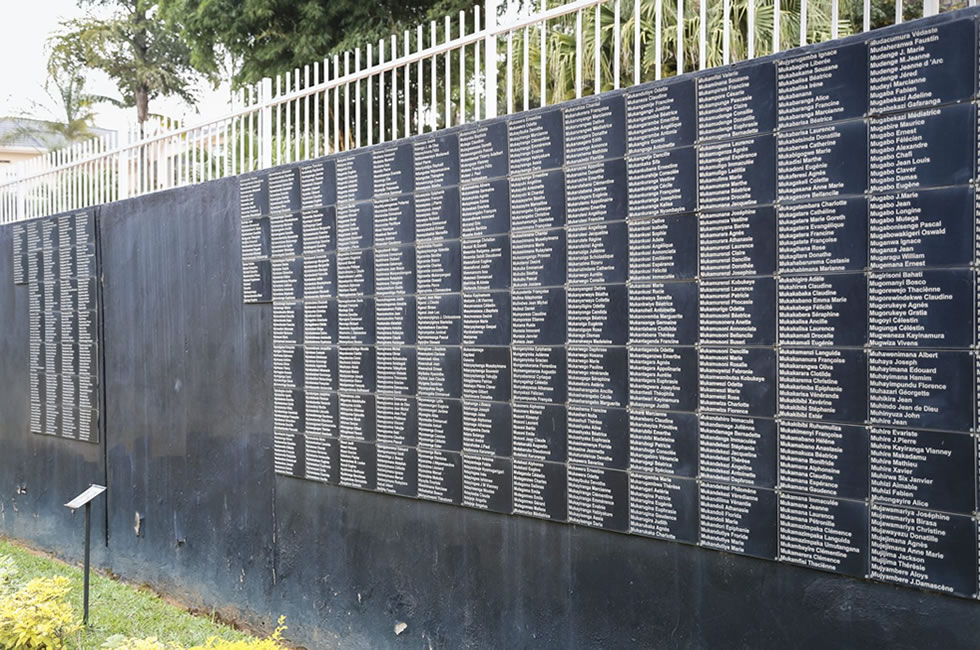
Inside Kigali Genocide Memorial: A Sobering, Insightful Experience
Kigali Genocide Memorial Centre is the final resting place for more than 250,000 victims of the 1994 genocide. It honours the memory of more than one million Rwandans killed in 1994 through education and peace building.
A tour to the memorial site, as I recently did, not only opens your eyes to the length man can go to achieve his own nefarious objectives, but also how the remains of the victims of the genocide are well-preserved for posterity.
The imposing building itself is an architectural wonder — a perfect resting place for the fatal victims of the genocide. More so, it is a place where the rich albeit sad history of the genocide is well documented for posterity. The building itself kind of tells you, “Never Again”.
As I gathered, the memorial was opened officially on the 10th anniversary of the Rwandan genocide on April 7, 2004. This, again, is a burial site constructed to honour some 250,000 people who lost their lives during the genocide. The planning plus management was, and is still handled, by the UK-based charity organisation called Aegis Trust, in collaboration with local authorities.
Aegis, a term that stands for ‘trust’ or ‘shield’, is an organisation campaigning against crimes against humanity and genocide. It was established in 2000 and its activities include policy, research, remembrance, education, media work and campaigns that involve humanitarian support for the victims.
The memorial itself comprises of the main historical exhibition (and here you are going to walk through a corridor where you’ll get to read about the beginning of the genocide), a children’s memorial exhibition, plus an exhibition on comparative genocide known as ‘Wasted Lives.’
It also has over four acres of memorial gardens that contain 10 mass graves, as well as the National Genocide Documentation Centre.
The magnificent principal building was structured by design to represent three different epochs: the pristine period before, during and after the genocide.
Our History Room
The main building has three exhibitions. The first room is entitled, ‘Our History.” It introduces the world, and everybody who visits the memorial centre, to the Rwandan history with large pictures showing individuals of all ages, showcasing the cultural lifestyle of Rwanda prior to the genocide, women breastfeeding their children and old men playing their traditional games, different attires, lifestyles, and even an almost life-size image of Rwandan King Yuhi V Musinga imposingly standing tall and proud.
Besides the images is a stanza that says, “This is about our past and our future, our nightmares and our dreams, our fear and our hope, which is why we begin where we end, with the country we love.”
As you walk silently (yes, you have to be solemn here) from one showroom to another through a series of corridors that are lined with several short notes with detailed information, there’s a feeling of walking on a real journey, as though you are experiencing the horrible genocide right through your own eyes.
Original and unedited videos of individuals being massacred (oh, what a terror!), testimonies of perpetrators and survivors as well as some Gacaca Court proceedings are conspicuously mounted on the concrete walls. Alongside these is a timeline of images of Rwanda’s (dark) history.
From “Our History Room,” you’re then led to a room called “Descent to Genocide”. This is a dimly lit room but full of graphic pictures of bones plus dead bodies, fatal victims of the genocide all over the country.
On one side of the wall stands 3ft image of mass grave at Kigali St. Famile, where over 30,000 genocide victims were burnt alive, and with comprehensive info on how Rwandan priests — meant to be custodians of souls — were instead responsible for the massacre of a host of Tutsis who had sought refuge in their churches.
A new Rwanda looking to the future
It is not over. You walk as if turning the next page in a tragic storybook, eager to reach that part where the villain is caught and forced to face justice, and thinking that the worst is behind you, until you arrive at the room called “After the Genocide”.
But even before crossing over, the word ‘Reactions’ is fully emblazoned in big capital letters. There’s a photo worth a thousand words; a scene where many children are gathered together, all staring into the camera, all orphans with little hope for the future.
From this, you are led to a circular corridor where a renowned artist, Ardyn Halter, created two stained glass windows that not only show a link between the survivors of the atrocity and Rwanda, but also the start of the genocide with skulls engraved at the bottom to the top, which simply means a new Rwanda looking to the future.
Then you are not going to miss rooms where individuals have placed images of their loved ones, a room solely dedicated to innocent children who lost their lives during the genocide, and a quote reading, “We did not make ourselves orphans”. At the end of your tour, you can now enter into the beautiful and intricate memorial gardens.
A sense of serenity, peace and calm
The gardens have fountains with a rose garden, where each rose symbolises a loved one lost but now blossoming in the bright future of what Rwanda currently is. These gardens were designed in such a way that individuals could sit outside in utter reflection. A sense of serenity, peace and calm suddenly grips you as you walk through the gardens.
Then there’s a sense of hope for the future, since everywhere is green, and everything is budding as though each leaf presents some sense of hope — a new and bright future. Your tour is lastly going to lead you to the Documentation Centre.
This centre is a place where several youths come together to debate, learn, acquire knowledge, as well as deal with issues on how they may help to prevent genocides, like what happened to Rwanda in 1994.
Then there are programmes the memorial is establishing for all to benefit from the development center, basing its major objective on unity and reconciliation. This is a place where, indeed, the fatal victims of the genocide have found a home.
As the memorial centre’s management aptly states, “these are everyone’s places as much as Rwanda’s. They should remain as a warning for future generations, both in Rwanda and in the rest of the world about the consequences of hatred and division.”
Read MoreExplore Rwanda in 9 days – (From $4,390 PP)
Whether it’s trekking the iconic mountain gorillas in the Virunga Massif, wandering among a wide range of wildlife in the Akagera savannah, exploring the beauty of the Nyungwe rainforest or immersing yourself in Rwanda’s unique culture, this lush, mountainous country, which is also known as the Land of a Thousand Hills, has what it takes to make your trip an unforgettable one. For a country that spans just 26,340 km², this luxury 9-day itinerary is designed to give you just enough time to explore all of Rwanda’s major attractions.
Day 1: Arrival and tour of Kigali
When you arrive at the Kigali International Airport, our representative will pick you up and take you to the historic Hotel des Mille Collins, the facility which was the subject of the famed 2004 Holywood movie, Hotel Rwanda. The journey from the airport to this hotel should take no more than 15 minutes.
After a short rest and, depending on the time you have on your hands, our guide will give you a tour of the city. Today’s options include browsing through local craft markets, art galarries and eateries. Kigali is also a pleasant place for strolling and people-watching and a visit to the Nyamirambo neighboughhood is sure to introduce you to the vibrant culture of contemporary urban Rwanda. Depending on your taste, later in the evening you can also visit some of the city’s trendy nightclubs and bars.
Day 2: Game drive in the Akagera National Park
The Akagera National Park is a two-hour drive from Kigali and visitors are required to be at the park entrance by 8am, meaning that your journey will have to start at exactly 6am.
Rwanda’s biggest national park, Akagera spans over 1,085 km² and is situated northeast of the country on the border with Tanzania. Named after the river that runs along the country’s eastern boundary, Akagera is Rwanda’s counterpart to the famous savannah reserves of Kenya and Tanzania.
More than 80 and 500 animal and bird species respectively are residents of this staggeringly beautiful national park, which ranks among the most scenic of Africa’s savannah reserves. Lions, elephants, zebras, cheetahs, hyenas, bufallos, giraffes, monkeys, hippos, bushpigs, warthogs, baboons, crocodiles, leopards, antelopes and a host of other wild animals are some of the sightings you should expect. The park also boasts more than 10 fresh water lakes.
You will be a guest at the exquisite Rusizi Tented Camp, which offers the ultimate jungle experience! All meals will be served here.
Day 3: Boat ride on Lake Ihema and off to Nyanza
On your third day, you will enjoy a boat ride on Lake Ihema, Rwanda’s second-biggest fresh water lake after Lake Kivu. Some of the most interesting sightings here will include waterbirds such as cormorans, fish eagles, African jacana, papyrus gonolek and kingfishers. You will also get the chance to see elephants grazing by the lakeside, crocodiles sunbathing, and hippos playing in water.
Word of caution: The hippo and crocodile are the most dangerous animals on the African continent as they claim more lives than any other terrestrial African animal. Be extra cautious when leaving the car. Our guides, however, are experienced enough to keep you safe.
After lunch and a brief relaxation, we will drive through the beautiful countryside of Bugesera district and head to the Nyamata Genocide Memorial Centre, south of Kigali. Originally a church, this place became the sight of one of the most appalling acts of brutality in Rwanda’s history as over 40,000 Tutsis who had sought refuge here during the 1994 genocide were mercilessly massacred by Hutu extremists. Inside the building, the walls are still blood-stained, clothes of the victims piled on the pews, and the bones and skulls that were recovered are neatly arranged on shelves. Guides here will help you learn more about this tragedy.
In the evening, we shall drive to the Nyanza Heritage Hotel in Nyanza town, Rwanda’s first capital city, for dinner and overnight.
Day 4: Travel to Nyungwe rainforest
Today, you will visit the King’s Palace Museum and the National Art Gallary in Nyanza town before setting off for a one-hour journey to Huye district to explore the National Museum of Rwanda for a peek into Rwandan history, art and culture. Lunch will be served at Mater Boni Consilii.
After luch you will head further south to explore the Nyungwe Forest National Park, the largest remaining tract of montane rainforest in East and Central Africa. The forest is home to more than 1,000 plant species, at least 120 butterfly species, 310 bird species, 32 amphibian species and 38 reptile species.
In addition, 86 different mammal species have been recorded in this forest, 13 of which are primates — colobus monkeys, mangabeys, blue monkeys, dend’s monkey, olive baboon, and grey chimpanzees, among others.
Twenty-seven of Nyungwe’s bird species are Albertine Rift endemics, of which three cannot be found anywhere else on the eastern side of the Albertine Rift: the Albertine owlet, red-collared babbler and Rockefeller’s sunbird. But the real gems here are the great blue turaco, a chicken-sized bird with garish blue, green and yellow feathers, as well as the flycatcher, a long-tailed blue, orange and white bird often seen around the guest house.
In the evening you will settle into your private cottage at the Nyungwe Forest Lodge, one of the best luxury lodges in Rwanda. The spacious cottages offer awesome views of the forest and Rwanda’s undulating hills and valleys.
Day 5: Chimpanzee Trekking
This morning you will be in for a memorable up-close and personal encounter with human’s closest relatives, the chimpanzees! Nyungwe’s chimpanzees can be heard before they can be seen: somewhere deep in the forest, you’ll hear an excited hooting, one voice at first, then several of them that rise into a frenzied crescendo before stopping abruptly or fading away.
The Nyungwe Forest harbours over 80 chimpanzees and four small types of prosimian, small nocturnal primates more closely related to the lemurs and Madagascar than any other primates of the African mainland, according to available records.
After about two-three hours of this memorable expedition, you can relax at the lodge.
After lunch you can go for East Africa’s only canopy walk! This walk takes place above a deep gorge cutting across the massive forest. Lasting about 1½ hours, the metalic walkway is suspended between higher slopes and giant trees, and it’s about 200 metres long with a maximum height of about 40 metres. This offers you a chance to spot blue monkeys and some rare bird species that dwell in the upper levels of the forest.
After the trail you will return to Nyungwe Forest Lodge for dinner before fading off to sleep.
Day 6: The Congo Nile Trail to Karongi
After breakfast you will travel to Karongi, formerly known as Kibuye, on the eastern shores of Lake Kivu, Rwanda’s biggest lake. Time allowing, you can visit the nearby islands and spend some time in nature, visit the Ndaba Falls on the mainland, or take a walk around the town and admire the colonial architecture that has somehow survived the effects of mass tourism and greedy town planners.
Your accommodation for tonight is the semi-luxury Cormoran Lodge, located right on the waterfront. The lodge is ideal for relaxation in the evenings as you enjoy your favourite drink and discuss the events of the day with other tourists.
Day 7: Continue the Congo Nile Trail to Rubavu
Rubavu is about 110 kilometres from Karongi, and just 60 kilometres to Musanze, home to the volcanic mountain-dwelling gorillas. There is a plethora of new stuff in this pristine town that is contigent with Goma, the far-famed city across the border in the Democratic Republic of Congo.
Rwanda’s sixth largest town, Rubavu now boasts new hotels, new restaurants, new coffee shops, new resorts…new recreational activities everywhere you look. You will go kayaking on Lake Kivu, visit nearby islands, hike Mount Rubavu, visit the Nyundo School of Music and laze around one of the beaches.
Later in the evening you will be driven to the northeastern town of Musanze, close to the Virunga range of volcanic mountains, home to the unique mountain gorillas.
Your accommodation for tonight is the Le Bamboo Lodge, located near the entrance of the Volcanoes National Park with amazing views of the volcanoes. It’s from here that you will start your gorilla trekking expedition tomorrow.
Day 8: Gorilla Trekking
As your trip draws to an end, you will be treated to one of the most spectacular travel experiences Africa has to offer: Mountain gorilla trekking in the immensely scenic and ecologically diverse Volcanoes National Park!
Starting your day as early as 6am, the head ranger at the park will devide you and other tourists into groups (about 80 tourists trek the mounatin gorillas in this park every day) basing on your interests and fitness.
As you move along the forest, your guide will point out signs of previous gorilla activity, including dung, nests, chewed bamboo shoots, etc.
However, even though you will have to scour this steep forested area for between one to seven hours before coming across the gorillas, you will only be allowed to be with them for only one hour to avoid stressing them. The good news is that you will be taken to one of the habituated gorilla groups that are now acustomed to human presense. Getting up-close and personal with human’s closest relatives in their natural environment is no doubt a humbling and emotional experience! Usually, the gorillas show no aggression, merely curiosity.
Away from the gorillas, you may also get a chance to see some of the over 180 bird sepcies that are resident in this park, including at least 16 Albertine Rift endemics: the francolin, Rwenzori turaco, Rwenzori double-collared sunbird, Rwenzori batis, strange weaver, dusky cromson wing, collared apalis, red-faced woodland warbler and Archer’s ground robin, to name a few.
Day 9: Visit to the Kigali Genocide Memorial Centre and departure
After a relaxed breakfast you will be transferred back to Kigali for a sombering tour of the Kigali Genocide Memerial Centre, the final resting place of more than 250,000 victims of the grotesque 1994 genocide. But this will only be possible if your flight is scheduled for 3pm onwards. You’ll then be driven to the Kigali International Airport to catch your flight back home.
Included in this package: Accommodation, meals, travel within Rwanda, tour guides and park entry fees.
Read More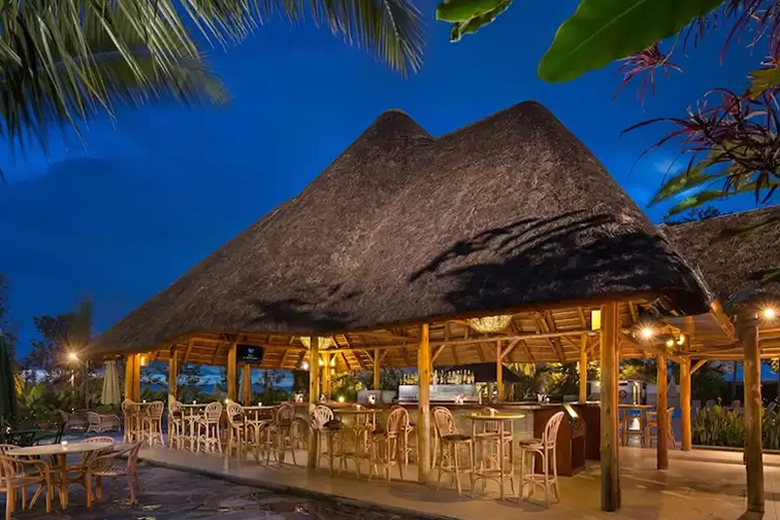
Hotel des Mille Collines
Hotel des Mille Collines is one of the most popu;ar hotels in Rwanda. Located in Kigali, the capital of Rwanda, this is the hotel premiered in the 2004 movie “Hotel Rwanda” where a hotel manager housed over a thousand Tutsis from getting lynched with machettes, axes and guns from the hutu Militia.
This hotel is today managed by the Kempelsiki, an international hotel chain well known for its good hostpitality sevices since it was founded in Berlin, Germany, in 1897. Today Kempelsiki is Europe’s oldest luxury hotel group. Hotel des Mille Collines features 112 hotel rooms which are decorated to blend into their earthy surroundings.
Hotel des Mille Collines is set in Rwanda’s capital city: Kigali. It is a four-star international hotel set in large gardens in downtown Kigali. The hotel gained much of its notoriety from its role within the feature film, Hotel Rwanda. As within the film, the hotel attracts a distinctly business clientele, however its base in the city centre means it is a good base from which tourists can explore. Today it is among the best hotels used by travelers who visit rwanda primarily for gorilla tours in the northern part of Rwanda where mountain gorillas can be viewed from the wild.
Enjoy a selection of rooms for guests looking to stay. Each of the Mille Collines’ rooms have private bathrooms, satellite televisions, PC hook-ups and with most of the standard hotel amenities. The rooms are spacious while not being luxurious, they offer a great base to explore the city or for a comfortable overnight stop.
The Hotel provides its leisure and business guests with most convenient services and facilities to ensure a most comfortable stay in Rwanda. It has a large swimming pool and a fitness suite, but these added luxuries will only be a minor distraction from the markets and interesting sights of the city. There is also a restaurant offering French and international cuisine and two bars offering local products as well as international drinks in the cocktail lounge.
Kigali, the capital of Rwanda, is a tranquil, cosmopolitan city offering visitors and travelers a wide range of cultural diversions and entertainment. With Kigali being in the centre of Rwanda, with most main roads leading to and from it, it is quite likely that an extended visit to the country could see you spend a night there. If a one night stop-over is necessary, then a visit to Kigali’s new and insightful Genocide Museum is highly recommended. Not only does it detail the history of Rwanda’s genocide, but also documents the history of genocide around the world, creating a very moving experience.
The unique attributes which make The Hotel des Mille Collines one of very best hotels is largely due to its endless views combined top notch food and service ensuring your holiday is a memorable one. In many countries, we probably wouldn’t even mention a hotel like this for our travelers. However, here it’s an attractive option, worth considering, because it offers standards of comfort that are relatively uncommon in hotels elsewhere in Rwanda.
The leisure traveler has the opportunity to visit Rwanda’s many attractions such as Genocide Memorials, the Genocide Museum, Volcanoes national park, Nyungwe and Akagera national park. Come and experience Rwanda……..!
Read More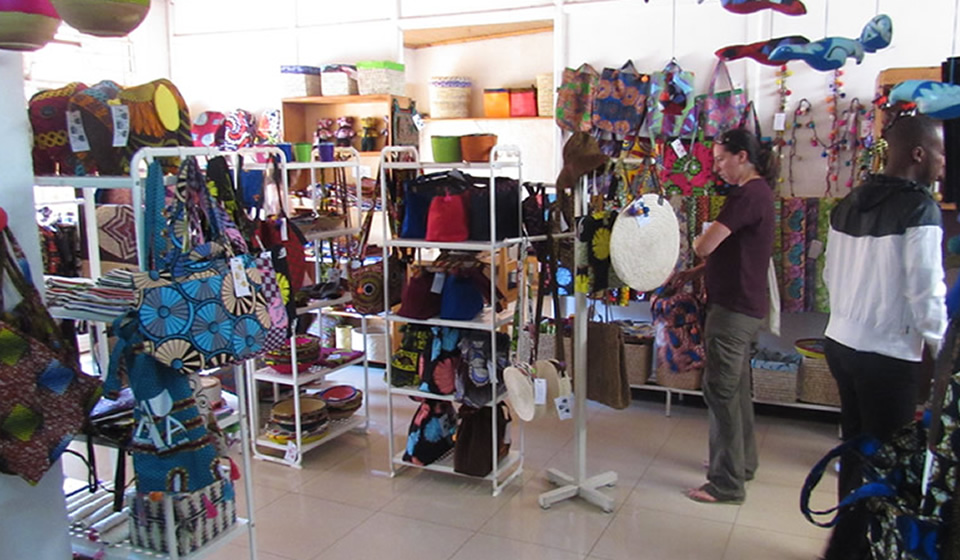
Best Places Where to Buy Art & Crafts in Rwanda
Although not yet fully explored, cultural tourism in Rwanda is at arise. Many tourists are now visiting the country to learn and discover more about her unique culture and diversity of fine crafts produced by the local Rwandese. Today, Rwanda has many cultural locations where tourists are entertained by local music, dance and drama performances, they get all kinds of crafts produced in the country as souvenirs and a chance to have experiential tourism by participating to local activities especially the dances.
The major crafts produced in the country include jewelry, baskets, wood carvings, pots and other related clay products, shopping bags, papyrus mats, calabashes and many others. While on a tour in Rwanda, below are the leading places where tourists can buy art pieces and crafts for souvenirs;
Nyamirambo Muslim Quarters
This is one of the biggest city suburbs and among the most active neighborhoods in Rwanda with various youth centers. It’s a multi cultural center with a large percentage of Muslims hence the name Muslim quarters. This is one of the best places for city tours and walks; a visit to these quarters gives you a chance to learn about the culture and ways of life of Rwandese city dwellers.
At Nyamirambo, there is the Nyamirambo Women’s Center (NWC) that provides guided walks and tours around Nyamirambo. They take you through their markets where you can buy fruits if you want, visit the West African communities in the area and learn about their culture; hair styles, dressing code among others. The women’s center also provides homestays to interested tourists who get a chance to learn basic Kinyarwanda or how to prepare a simple local Rwandese meal. Nyamirambo has a prominent recording studio where many Rwandese upcoming artistes flock to try out their talent. A visit to this studio will give you a chance to listen to the sweet amazing voices and lyrics of people of Rwanda.
The Gatagara Pottery Experience
This pottery experience can be got in Gatagara which is an hour and thirty minutes drive from the capital Kigali. The local artisans are always ready and willing to teach the pot making process to any interested tourist. The Gatagara area has a number of clay products which include cooking pots, flower vases, bawls, clay plates and cups. All the clay products from this area are unique because Gatagara is blessed with special clay soils with some mica components.Tourists to this culture and heritage site are given chance to create their own pieces which provides a good and unforgettable Rwanda tours experience. Most of the pottery skills possessed by the Gatagara artisans were got from the Batwa –the original inhabitants of the place. Today these skills are being complimented by new modern skills to produce beautiful clay products.
Ivuka Art Center
It was opened in 2007 in Kaciyru district to explore the artisan talents of the local Rwandese and to act as selling center of the locally made crafts. The center exhibits various pieces of art including carvings, sculptures, pottery, pictorials and many others. Today, the Ivuka art center exhibits art works of over 14 local artistes and even gave way for the establishment of Bwiza arts Kigali, Uburange arts and Inema arts center. The Ivuka center also carries out international art exhibitions which any one on a Rwanda safari or cultural tour should not miss.
Rwanda Nziza
This offers a variety of local Rwandan made handcraft products like jewelry, carvings which makes all the earned profits to go back to the local economies. Different artisans also get to be known because all art products have the artisans’ personal profile, product description, its cultural significance and the cultural values attached to it. This has played a big role in preserving the art and craft cultures of the Rwandese. The Rwanda Nziza is also known as the Rwandan fair trade artistes association that was started to promote Rwanda cultural tours.
Ishyo Arts Center
This is a concert and events center in Kigali. The center was started to bring together musicians, dancers, comedians, actors and actresses to one cultural performance that would act as a learning platform form and support initiative to the upcoming talented artistes. If you are so much interested in having fun, this center can be a good place to visit on your Rwanda tour.
Caplaki Craft Village
At this crafts village, we find the Caplaki co-operative that deals with locally made handcrafts. While at the Caplaki craft village, you will find a variety of hand made crafts of all kinds. There are many craft shops around therefore you will have a wide range of options to choose from. Caplaki is among the oldest craft market streets and the craft villages also have crafts from Congo, Uganda, Tanzania and Burundi.
Read More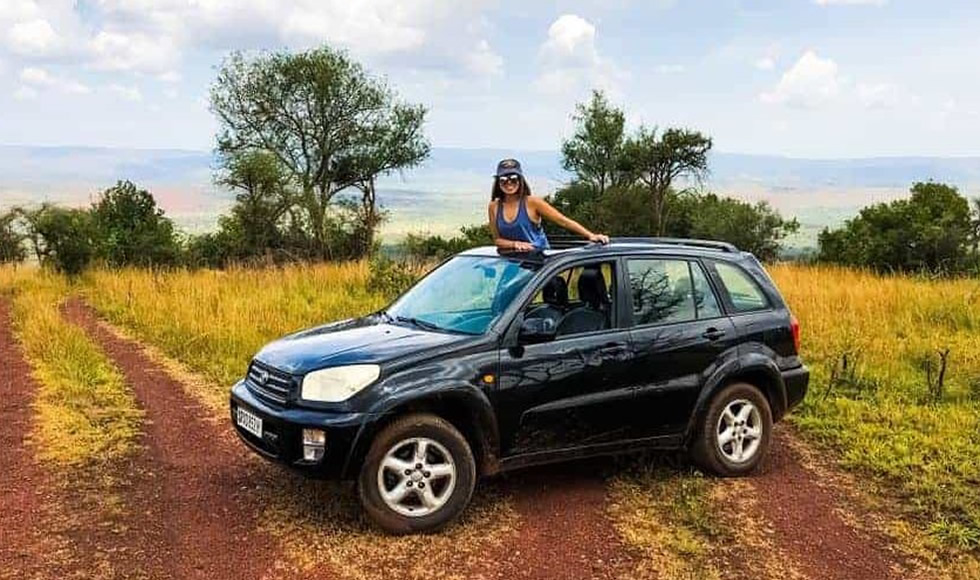
Top 10 Rental Cars Hired Out in Rwanda
Looking to exploring Rwanda but wondering about which car to use for your travel? We have reviewed some of the best cars for travels in this mountaineous country. Choose from the wide array of car rentals and explore the land of a thousand hills in a new way. Here are the top 10 rated vehicles that you can think about hiring a car in Rwanda for your travel or occasion;
4×4 Toyota Rav4
Our Toyota Rav4s are compact and best of the small SUVs. They are perfect car rentals if you plan a self drive tour, conference meetings, picnic tours, weekend getaway, camping, or business tours in Rwanda. They are spacious for your cargo, for you to stretch your legs. Besides, they have the best fuel consumption rate. They accommodate up to 4-5 people and consist of air conditioner.
Toyota Land Cruiser TX
Book our luxurious and comfortable 4×4 Toyota Land Cruisers TX and enjoy your road trip to different part in Rwanda without any worries. Our Toyota Land Cruisers TX takes 5 visitors and consists of air conditioners. Choose from our Toyota Land Cruisers-diesel and petrol-manual or automatic transmission.
Roof tent Land Cruisers Prado TZ
Rent Roof Tent Land Cruisers Prado TZ and enjoy your wildlife tours in Rwanda’s Akagera National Park in a new style. Our Roof Tent Land Cruisers Prado TZ are spacious and you do not have to worry about where your cargo will be.
Roof tent Land Cruisers V8/VX
Reserve our Roof Tent Land Cruisers V8 with Camping gear and get the best of your safari in Rwanda.
Coaster Bus
We have the best Mini buses for hire especially for group safaris. They take about 23 people and they come with air conditioners, MP3 and CD player.
4X4 Toyota Prado with Sunroof
Our 4×4 Toyota Prado car rentals take five visitors and they come with adequate room for your cargo.
Luxury Land Cruisers V8
Our luxury Land Cruisers V8 are exceptional luxury large SUV Class. They are built in such a way that they can tackle any kind of terrain. They have the best interior and they come in automatic transmission.
Toyota Prado
We have the best Toyota Prado for your road trips in Rwanda. They accommodate up to 5 people and they come with air conditioner. Choose from either manual or automatic transmission.
4×4 Toyota Land Cruisers Hard Top
Get the best of our 4×4 Toyota Land Cruisers Hard Top and embark on safari in Rwanda in comfortable way. Our 4 wheel drive Toyota Land Cruisers Hard Top takes between 6 and 9 people. They come in manual transmission, spare tires, lift jack, mini fridge, and ideal for wildlife safaris.
4×4 Toyota Land Cruisers Hard Top Extended
Book our luxurious 4 wheel drive Toyota Land Cruisers Hard Top Extended cars and get a reward of Rwanda road trip. They are comfortable and take between 6 and 8 people. They come with a mini fridge, air conditioner and you can get it at pocket friendly price.
Super Custom
Our medium size Toyota Super Customs are well maintained, comfortable and they take about 8 visitors. They are diesel powered engines with AC, luxurious to offer you that total comfortable while on a road trip in Rwanda. They are a perfect way to get around Kigali and several parts in Rwanda.
Saloon Cars such as Toyota Coronas; Our Toyota Coronas have a capacity of 4 and consist of air conditioner, airbags, CD player, and comes in manual or automatic transmission.
Safari Vans
Our Mini Vans take about 8 people. They consist of Air Conditioner, adequate space, pop up, roof rack and they are good for safaris in Rwanda.
Toyota Premo
Interested in city drive? Book one of our luxurious Toyota Premo cars and embark on road trip in Kigali in comfortable way. Our Toyota Premo cars have airbags, centralized door lock and-both manual and automatic transmission.
Read More
Athlético Marseille signs France goalkeeper Sofiane Mahmoudi from Luynes Sport FC
Marseille, Bouches-du-Rhone based club Athlético Marseille have signed French-Algerian goalkeeper Sofiane Mahmoudi on a short-term deal from lower club Luynes Sport FC.
The 17-year-old is a free agent having played with Luynes Sport FC last season.
“I’m delighted to become part of this great club with a lot of history. I am here to also help the team in its campaign in the Championnat National 3 league” he said.
Mahmoudi is one of the highest rated youth goalkeepers at Luynes Sport FC, we are happy this opportunity came to him, we wished him well in his next chapter and he’s always welcome home at Luynes,” coach of Luynes said.
The young goalkeeper is being regularly called up to the Algerian national U17 team, but is yet to make her senior debut.
Despite finishing 5th in the Championnat National 2 league, Athlético Marseille were relegated to Championnat National 3 league and will play in the Championnat National 3 league in the 2020 season.
Read More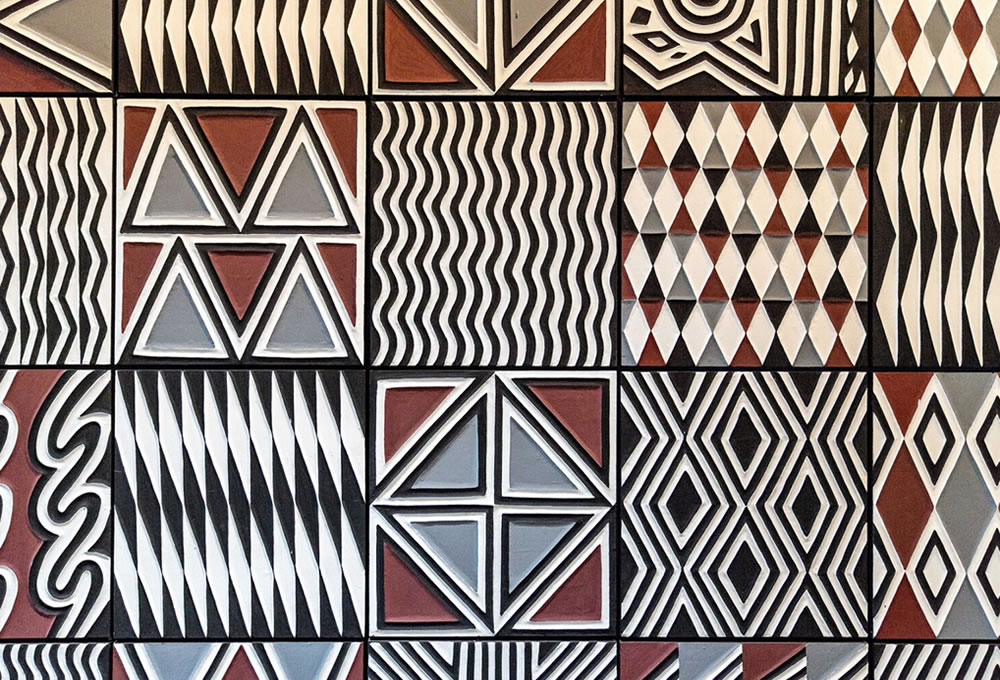
Art is Now the Biggest Trend in Rwanda Tourism
There’s no thin line between art and tourism, since both are inextricably linked. When a tourist visits a place, he wants to carry a piece of souvenir to remind him about the place he visited.
And artists are the producers of such pieces. In the end, they profit since the tourist dollar is always naturally appealing for their sustenance.
This is a kind of trade that’s quite vibrant in Musanze, the hub of Rwanda’s tourism industry.
Art pieces are ubiquitous everywhere you go, especially around Kinigi where tourists visit to not only see the famous mountain gorillas but also other attraction this place offers. Art pieces can be found hanging on the walls of hotels and among other places the tourists are likely to visit.
According to an article appearing in Tourism&More, an online journal, “artistic tourism attracts people who are willing to spend money.
Numerous studies from around the world have shown that people who include the arts in their travel plans often have higher income levels than other tourists to that locale, have a greater likelihood of staying in local hotel, take longer trips and shop more.”
There are several art galleries that have opened their doors where tourists can go and purchase these pieces. Art centers and galleries found in Musanze include (located along the road to Kinigi), and Red Rocks Art Gallery, located in Kinigi.
Apart from these, there are individual artists and craftsmen that sell their products in Musanze, such as COPABU Cooperative and Kinigi Community Commercial Center (KCCC) Cooperative.
Willy Karekezi, a visual artist in Kigali, says he paints in Kigali, but transports some of his pieces to Musanze where they are displayed in different galleries there.
“Some tourists come to visit Rwanda for a day or two and they head straight to Musanze for gorilla trekking. These tourists are unable to visit the art galleries in Kigali, and that’s why I take some of my pieces to Kinigi where tourists can easily find and purchase them,” he says.
Some of Karekezi’s latest paintings can be found at Red Rocks Art Gallery in Kinigi where he says he has forged a partnership with the gallery to market and sell his artwork.
“Tourism is quite vibrant here in Kinigi and we discovered that through art, the artists can not only produce aesthetic pieces that appeal to the eyes of the tourists but also art pieces with bold messages behind them about conservation.
Through this, both the tourists and the locals become conscious about environmental protection through the eyes of an artist,” says Greg Bakunzi, founder of the Red Rocks Art Gallery.
Hotels surrounding the main tourist attractions in Musanze are cashing in on this trend, playing host to several art pieces and exhibitions from artists as far as Kigali. At the Red Rocks Cultural Center in Nyakinama village, you find pieces of artwork placed strategically at the reception, and more often than not when a tourist wants to depart, he or she is likely to buy these art pieces that are conveniently priced in dollars.
Mohamed Ndabaye, a resident artist at Red Rocks Cultural Center, says over the last few years, tourism in Musanze has tremendously grown, and this has been a boon to them since they are able to produce and sell more pieces.
“Rwandan artists mostly rely on tourists since only a few locals purchase our products. It’s therefore prudent to strategically place our products where tourists can easily reach them. It’s good that more galleries are opening their doors here in Musanze, and artists are now able to find places they can display and market their products,” says Bakunzi.
Another trade that’s taking advantage of tourism boom in Musnze is the crafts trade. COPABU is composed of a group of about 1,000 members, mostly rural women and several cooperatives and they have recently opened a shop in Musanze with women making traditional baskets and men making sculptures.
The main raw materials at the base of their products are the banana bark, grass marsh, papyrus and jacaranda wood. It is a large handicraft shop selling local products, including woodcarvings, jewellery, basketware and other souvenir-worthy items, with flexible opening hours.
Another handcraft shop, composed of 12 cooperative members, can be found at the Kinigi Community Commercial Center, near the Volcanoes National Park.
Read More